About this detail of the Tiger
The niche to the right of the radio operator was used for storage, mostly of ammunition for his MG34. The walls, the ceiling and the floor of the niche all had stowage points.
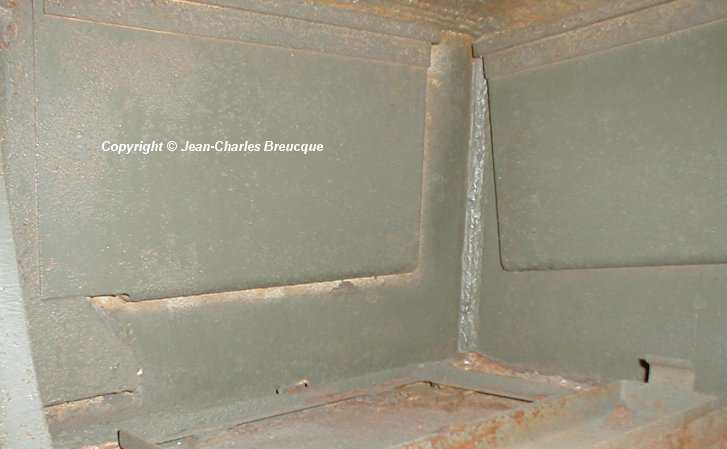
Looking forward into the niche, we can see metal panels fixed to the wall. A rail is screwed to the top of each panel. (This Tiger in Saumur Museum was painted green postwar.)
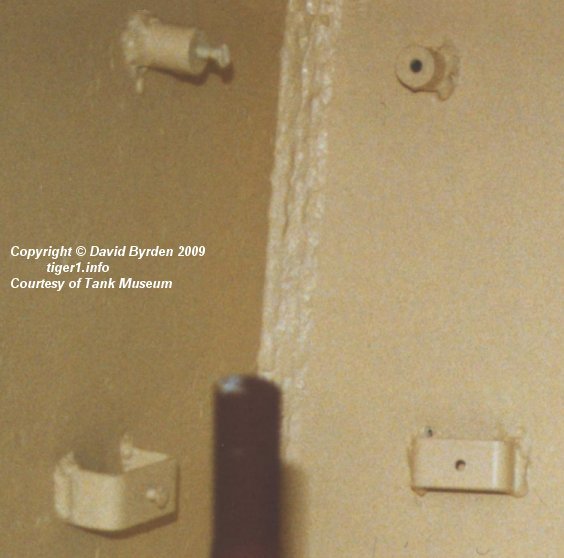
Standard MG34 ammunition bags ("Gurtsäcke") were hung on the rails. The panels protected them from splash (steel splinters) in the event of the vehicle being hit. This is the same corner in the Bovington Museum Tiger, with the panels removed. They were set at 25mm from the armour wall and had folded edges to trap the splash behind them.
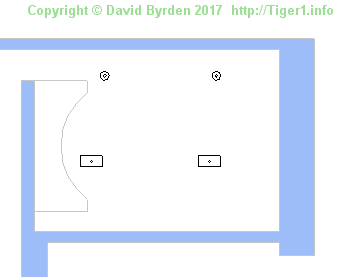
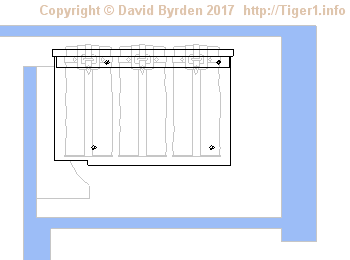
These diagrams show the mounts and the panel on the front wall. The rack has room for 3 ammunition bags. As far as I know, this front panel was identical in every Tiger built.
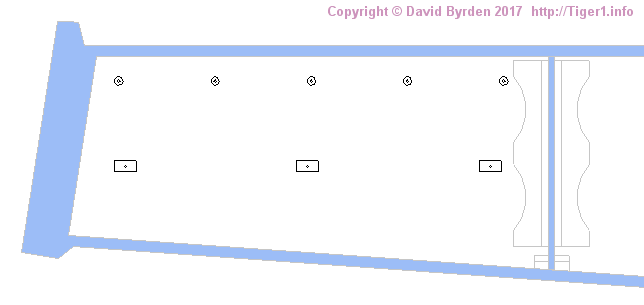
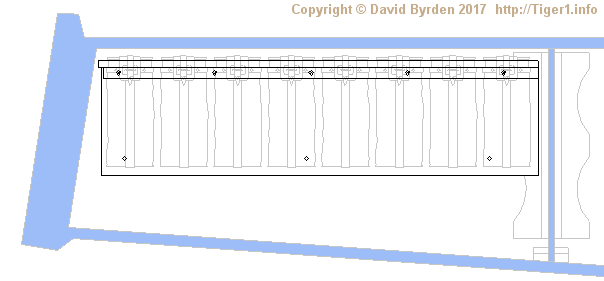
These diagrams show the mounts and the panel on the side wall. This rail was 1 meter long and had room for 8 bags.
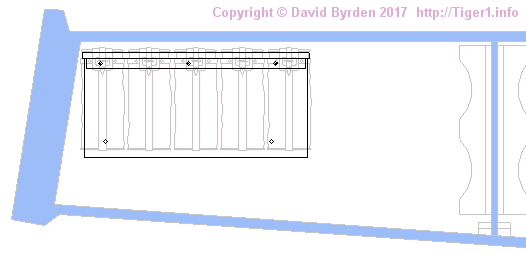
In Befehlstigers there was a shorter (560mm) version of this rail because of the extra radio equipment stowed in the niche. [1] . It could hold 5 bags, with no room to spare.
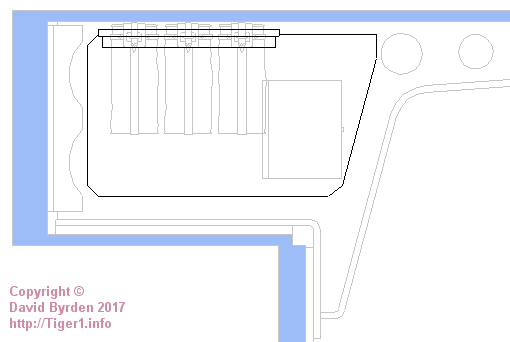
At the back of the niche there was a structural brace with a thin steel panel clipped to it. A third rail was welded at the top of this panel, shown here [4] . Like the front rail it was 400mm long and could hold 3 bags.
This back rail was not present in Befehlstigers [1] . Therefore Befehlstigers had 8 ammunition bags on the walls of this niche, while standard Tigers had 14. The 6 ammunition bags omitted here were part of the 10 bags omitted overall from a Befehlstiger [1, see 3.2.5] .
In November 1943, 18 unused Befehlstigers were converted to standard tanks due to production shortages. Kubinka Museum has one example. It retains the short Befehlstiger ammunition rack on the side wall of this niche; I have not seen the rest of the niche in the Kubinka vehicle but it's likely that metal strips, like the one in the turret, were added to the side and rear walls, bringing the ammunition storage in this niche to 14 bags (three more on the side wall and four on the rear wall).
I draw this conclusion from two facts; that the manufacturers were obliged to convert the tank to the capacity of a standard Tiger; and that the MG tool box in the Kubinka Tiger, which has been photographed, is attached to the rear brace at an inconvenient place, explicable if there are 4 ammunition bags beside it.
[1] Workshop drawing J 3039 : Befehlstiger hull interior
[2] Survey of Tiger 250122, at Bovington museum, by David Byrden
[3] Survey of vehicle 251114, at Saumur, by Jean-Charles Breucque
[4] Survey of Tiger 251114, at Panzermuseum Munster, by Rob Veenendaal